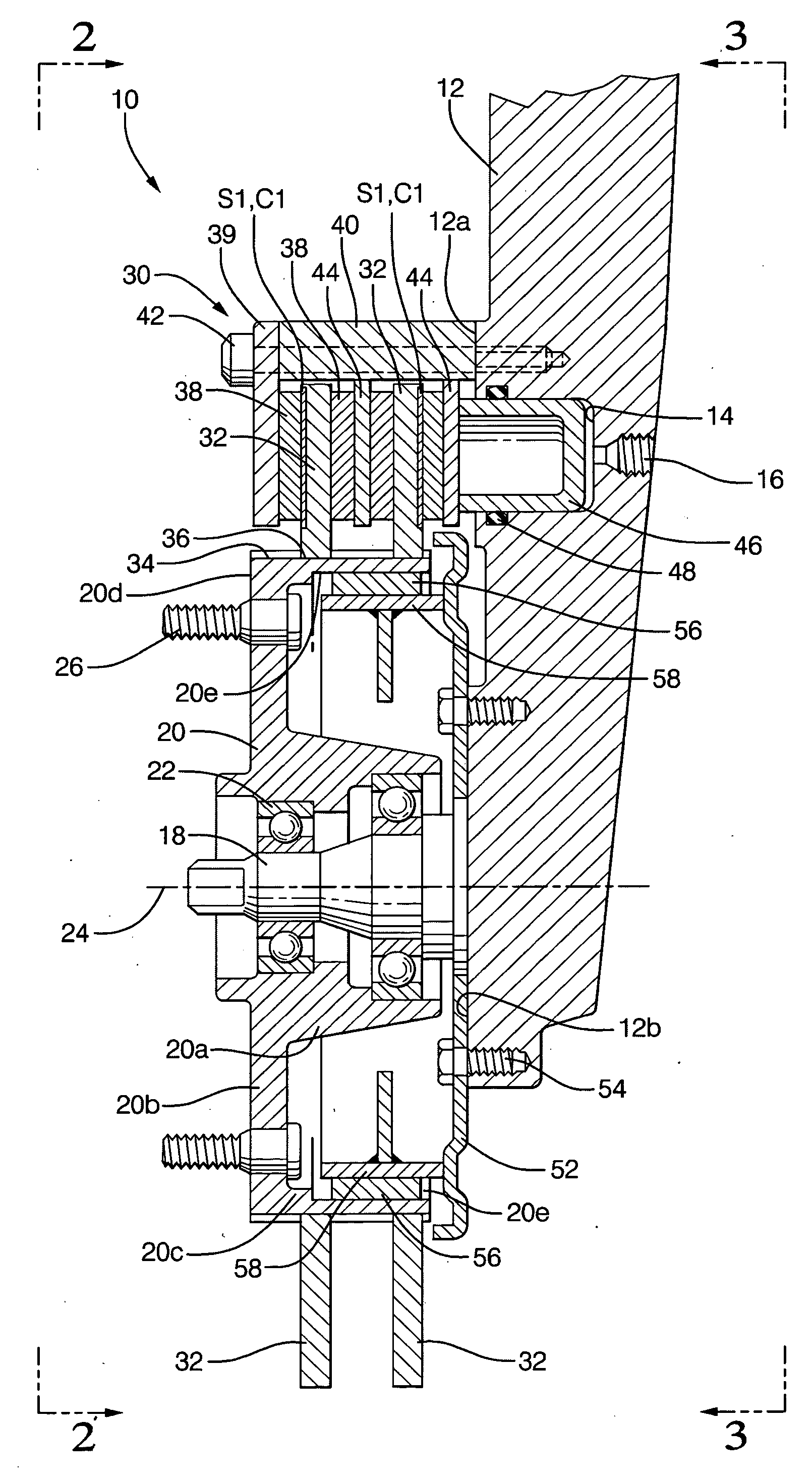Brake assembly and coating
a technology of sacrificial corrosion protection and brakes, applied in the field of brake assembly and coating, can solve the problems of coating galling, surface wear, and coatings that are not suitable for wear applications, and achieve the effects of reducing the likelihood of corrosion, maintaining torque and wear, and improving protection
- Summary
- Abstract
- Description
- Claims
- Application Information
AI Technical Summary
Benefits of technology
Problems solved by technology
Method used
Image
Examples
example 1
[0044] A rotor is coated in accordance with the present invention. The component is first wire-brushed and then alkaline rinsed followed by washing. The rotor is then preheated to about 250 C prior to coating. A composite coating including copper and zinc / aluminum is then applied to the rotor by twin arc thermal spray processing. The composite is created by using a single arc spray gun. Accordingly, a wire of zinc / aluminum and a wire of copper were fed into the gun. The composition can be varied by adjusting the wire diameter of the source materials. Similar results are expected with regard to similar compositions sprayed with separate guns, wherein each gun sprays either zinc / aluminum, or copper.
[0045] An adhesion test was performed using a Romulus IV Universal materials tester manufactured by Quad Group, Inc. To measure the coating adhesion to a substrate, an Al stud with an epoxy coating is mounted on the coating surface by some clamping mechanism. The epoxy is cured in an oven ...
example 2
[0046] A rotor is coated in accordance with the present invention. The component is first wire-brushed and then alkaline rinsed followed by washing. The rotor is then preheated to about 250 C prior to coating. A composite coating including 420 stainless steel and zinc / aluminum alloy is then applied to the rotor by twin arc thermal spray processing. The composite is created by using a single arc spray gun. Accordingly, a wire of zinc / aluminum and a wire of 420 stainless steel were fed into the gun. The composition can be varied by adjusting the wire diameter of the source materials. Similar results are expected with regard to similar compositions sprayed with separate guns, wherein each gun sprays either zinc / aluminum, or 420 stainless steel. An adhesion test was performed as defined in Example 1. Pull test adhesive strength of the matrix zinc / aluminum alloy matrix over the machined cast iron rotor surface has been demonstrated to be about 7 kpsi.
example 4
[0048] A brake component surface was coated in accordance with the present invention, with the majority of the coating containing the sacrificial corrosion component. The component was tested for 300 hours of ASTM B117 salt spray testing and showed less than 10% of the base cast iron with red rust.
PUM
| Property | Measurement | Unit |
|---|---|---|
| thickness | aaaaa | aaaaa |
| thickness | aaaaa | aaaaa |
| current | aaaaa | aaaaa |
Abstract
Description
Claims
Application Information
 Login to View More
Login to View More - R&D
- Intellectual Property
- Life Sciences
- Materials
- Tech Scout
- Unparalleled Data Quality
- Higher Quality Content
- 60% Fewer Hallucinations
Browse by: Latest US Patents, China's latest patents, Technical Efficacy Thesaurus, Application Domain, Technology Topic, Popular Technical Reports.
© 2025 PatSnap. All rights reserved.Legal|Privacy policy|Modern Slavery Act Transparency Statement|Sitemap|About US| Contact US: help@patsnap.com



